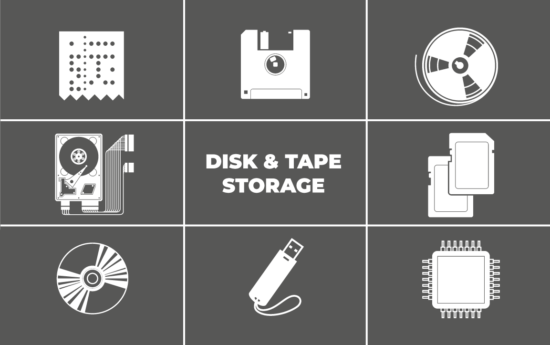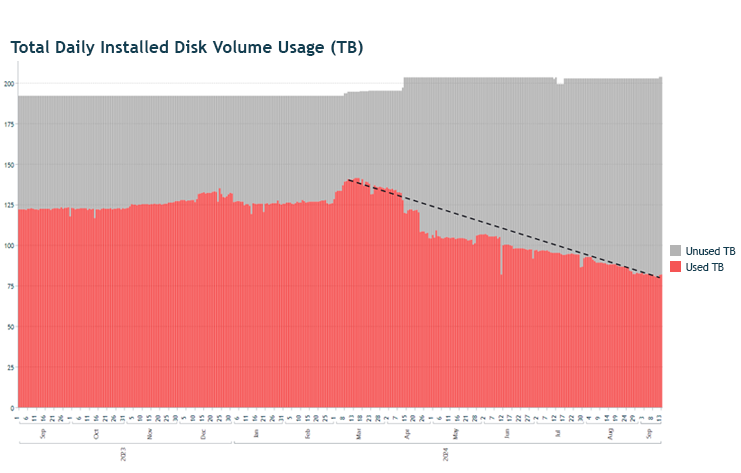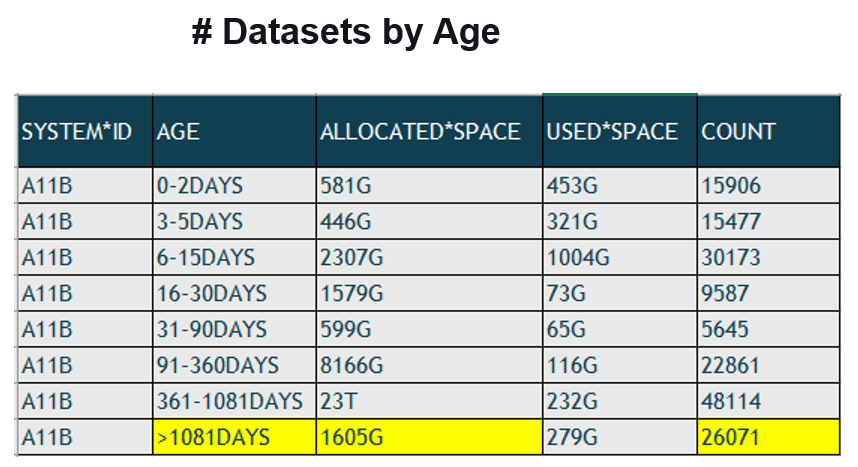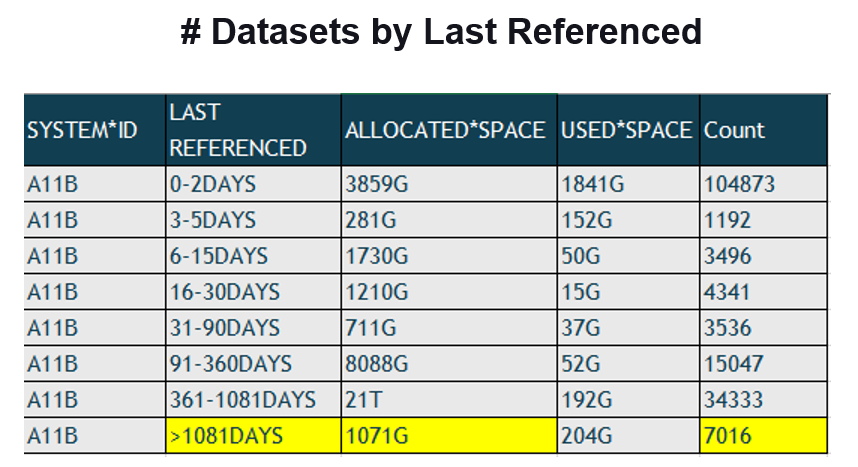Disk and Tape Storage: Cost Allocation and Capacity Planning

By Mary Solomon, VP of ITBI Services, SMT Data
TL;DR
Efficient disk and tape management lowers costs by combining DCOLLECT metrics, dataset-to-business mapping, and smarter lifecycle strategies.
Key Insights
-
DCOLLECT reveals usage patterns and highlights wasted space.
-
Mapping datasets to business units ensures fair cost allocation.
-
Tape migration and HSM monitoring improve efficiency and reduce CPU load.
Why It Matters
Better storage planning saves money, reclaims resources, and improves long-term capacity management.
Efficient management of mainframe disk and tape storage is essential, and organizations must balance cost optimization with seamless operations. Recently, my work with major Scandinavian banks on their mainframe storage systems has underscored the critical need for storage cost allocation and capacity planning in managing these resources effectively.
Disk Storage Management
As mentioned, disk storage is essential, but it requires careful management due to the CPU resources needed to move datasets between storage tiers. Many organizations invest heavily in storage without fully understanding how their data is used, and this leads to inefficiencies and unnecessary costs. IBM’s DCOLLECT, MIGRATE, BACKUP and RMM data is invaluable in this context, providing insights into active datasets in the different level in the device, VSAM datasets, and more, enabling organizations to reclaim unused space and optimize storage allocation.
The first step in understanding disk space management is knowing how much space is installed, how much is used, and how much remains unused. This information helps the mainframe storage billing department to get a clear picture of their monthly or yearly payments to their outsourcing providers.
DCOLLECT data provides the device overall installed and used space information. In ITBI™, we read DCOLLECT data every day and store it for 5-6 years, allowing our customers to track and understand the installed disk space on their mainframe or what their outsourcer has installed.
The table below, from DCOLLECT data, shows the installed space in terabytes, along with the used and unused space. The accompanying graph also illustrates daily disk space usage and free space in terabytes, offering a clear and comprehensive view of your DASD device overview at a high level.


HSM Daily Activities
Hierarchical storage management (HSM) or DFSMShsm, is a key component of IBM’s storage management framework. It automates the migration of datasets between high-speed Direct Access Storage Devices (DASD) and slower, less expensive storage options like tape. However, the HSM address space consumes CPU cycles as they manage daily dataset activities across different levels of disk storage. This can result in significant CPU usage. It’s important to regularly monitor HSM’s daily CPU consumption, especially for tasks that require high CPU cycles, as this can indicate areas where HSM and DASD activities should be reviewed and optimized.
Mapping Datasets to Business Units
One of the most impactful strategies for cost allocation is mapping datasets to their corresponding application code and business unit. This approach provides detailed insights into storage usage by department, facilitating accurate monthly cost allocation.
In a recent project with a major Scandinavian bank, we tackled the challenge of managing approximately 200 million datasets stored across both disk and tape. By developing a program to identify patterns within these datasets, we successfully matched each dataset to the correct application and business unit. This mapping allowed the bank to allocate storage costs accurately each month, significantly improving their ability to manage and optimize storage expenses across departments.
Why We Need to Care About Disk and Tape Space Usage
In basic terms: we need to care about disk and tape space usage because it helps optimize storage costs, improve data accessibility, and ensure that storage resources are used efficiently. By closely monitoring storage trends, dataset aging, and usage patterns, we can make informed decisions that benefit the entire organization. Let’s discuss the details:
- Cost Accountability at the Dataset Level: Allocating costs per dataset by business department ensures that each department is responsible for its storage usage and expenses, promoting efficient use of resources.
- Analyzing Disk Usage Trends: Reviewing disk usage trends over the last five years helps us understand how storage needs have changed, allowing us to better predict future requirements and plan accordingly.
- Optimizing Storage with Disk-to-Tape Migration: Moving older, less frequently accessed datasets from disk to tape can free up valuable disk space, making room for more critical data and reducing overall storage costs.
- Managing Aging Datasets: By categorizing datasets into eight buckets based on their age using a specific ITBI™ formula, we can easily identify datasets that are older than three years. This enables us to decide whether to migrate them to tape or keep them on disk.
- Identifying Unused Datasets by Last Reference: Datasets that haven’t been accessed in over three years but still occupy disk space can be identified through their last reference date. This allows for efficient storage management by moving them to lower-cost storage solutions or archiving them if no longer needed.


- Tracking Datasets Reclaimed from Tape: Monitoring datasets that have been reclaimed from tape helps refine our storage strategy by showing the demand for access to older data and guiding decisions on what data should remain on tape versus disk.
Conclusion
In summary, effective disk and tape storage management requires a strategic approach to cost allocation and capacity planning. Utilizing data like DCOLLECT, HSM, and RMM, along with mapping datasets to business units and regularly reviewing storage trends, ensures that data is stored efficiently. This approach not only supports long-term business goals but also enables precise monthly cost allocations.
-
 Mary SolomonVice President of ITBI Services
Mary SolomonVice President of ITBI Services
FAQ
-
What is DCOLLECT used for in storage management?
It gathers detailed metrics on disk usage, helping identify capacity trends and inefficiencies.
-
How does mapping datasets to business units cut costs?
It links resource use directly to departments, enabling fair chargebacks and promoting accountability.
-
What strategies optimize disk and tape storage?
Moving inactive data to tape, reclaiming unused space, and monitoring HSM processes.
-
Why is storage lifecycle management important?
It keeps storage costs under control while ensuring active data remains accessible.
-
How does SMF data support storage cost allocation?
While storage metrics (disk, tape, HSM, backups) show usage of space and activity, SMF data adds the performance / system load side (such as CPU usage for dataset migrations, backup jobs etc.). Use SMF data for full Mainframe cost visibility. Read more on SMF Data here.




